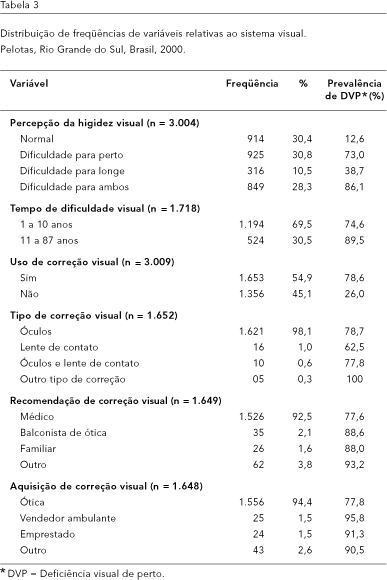The objective of this article was to estimate the prevalence of presbyopia in adults <FONT FACE=Symbol>³</FONT> 30 years and explore associated characteristics such as demographic, socioeconomic, and individual variables. A cross-sectional, population-based study was performed with 3,007 adults <FONT FACE=Symbol>³</FONT> 30 years in Pelotas, Rio Grande do Sul, Brazil. Near vision acuity was evaluated using the Jaeger table, and other variables were investigated using standardized, pre-coded questionnaires. Prevalence of presbyopia was 54.7%. When visual acuity was measured using visual corrective means, prevalence was 29.34%. Age and female gender were associated with the outcome variable after controlling for confounding. Some 42.4% of the sample reported not requiring near vision for routine daily tasks. The conclusion was that presbyopia displays a high prevalence in the adult population and is directly related to increasing age, especially 45 years of age and appearing earlier in women. In some 30% of individuals who already use visual corrective means, the latter are ineffective for near vision.
Presbyopia; Prevalence; Vision; Cross-Sectional Studies





